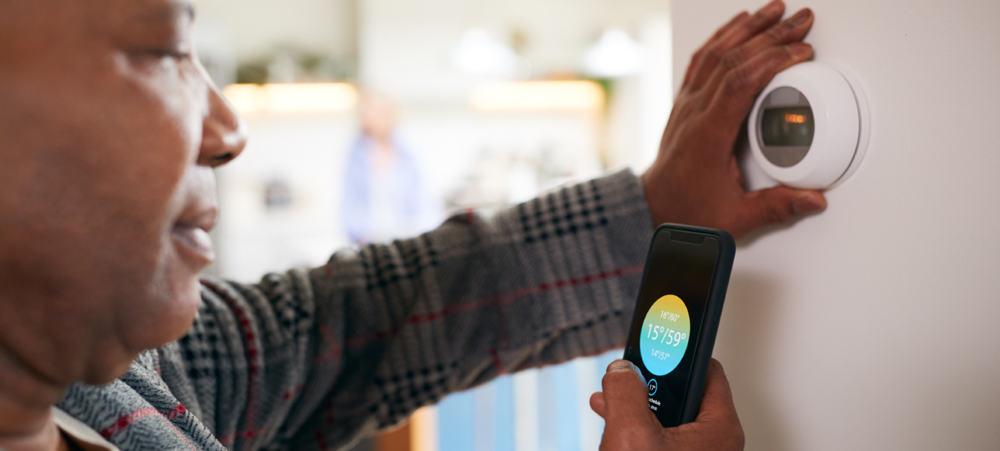Energy bills have risen for most of us since the energy price cap increased in October 2024. What's more, an estimated 10 million people will no longer be getting the Winter Fuel Payment this winter.
But the power is still in your hands to reduce your monthly bill. There are schemes that you can sign up to that help to bring the cost down, as well as some simple tips to use less energy without feeling the difference.
If you have a smart meter, check if your energy supplier runs one of the new schemes to encourage customers to reduce their use at peak times. Ovo Energy, British Gas, E.On Next, EDF and Octopus all run schemes.
Ovo’s scheme, Power Move, for example, rewards customers for using less than 12% of their total electricity consumption between the peak hours of 4pm and 7pm, Monday to Friday. So shifting the use of appliances like washing machines, dishwashers or (electric) ovens to other times of day means you can earn credit on your bill.
British Gas’s PeakSave Sundays, meanwhile, encourages customers to switch energy-intensive tasks to Sundays between 11am and 4pm. It does this by offering half-price electricity during these hours, giving you a good excuse to get your housework and laundry done, or your gadgets charged, for the week ahead.
There are a number of similar schemes like this – so check your supplier’s website to see what options are available to you. You can also look into the Demand Flexibility Service, run by the National Energy System Operator. The scheme has run each winter since 2022 and is currently being redesigned for the coming winter. It might be presented by your supplier as savings schemes like the ones listed above. Or if your supplier doesn't offer anything, free apps like Utrack Money Back or Hugo Energy enable you to join in regardless of your supplier. You'll need to sign up to one of these apps and give them access to your smart meter.
Technology is making it easier than ever before to track how much energy we use, on what, and when. So become a geek – get clued up on your energy usage and work out where you can start making savings.
If you have a smart meter, the in-home display shows how your energy usage goes up and down in real time as you use different appliances. For something more user-friendly, you could try the Uswitch app or Hugo Energy app. They link to your smart meter and display the information in a much clearer way on your smartphone.
You can use this information to experiment with small changes such as setting your washing machine cycle at a lower temperature, only running the dishwasher with a full load, or taking shorter showers.
Given the rising costs of energy, and other pressures on the cost of living, an ever-increasing number of households are, sadly, finding that they need a little extra support. Fortunately, there are pockets of support available, if you know where to look for them.
Caroline Abrahams CBE, charity director at Age UK, told Saga Money that it’s vital you ask for help if you need it.
“Every penny counts if you are trying to make ends meet, so we urge anyone who is feeling the pinch to contact Age UK for advice and a free benefits check,” she said.
“A successful claim for Pension Credit could top up your weekly income and be life-changing, giving you the confidence to keep the heating on during the colder months ahead.”
If you are getting the Guarantee Credit element of Pension Credit, you could get £150 off your electricity bill under the Warm Home Discount Scheme (although not in Northern Ireland). It's usually applied automatically by your energy supplier if you're eligible.
Pension Credit recipients (and those on certain other benefits) will usually be eligible for a £25 Cold Weather Payment if the average temperature is 0°C or below for seven consecutive days or more.
There are other sources of support too, including the Household Support Fund. Money expert Paul Lewis has written a guide to the help available.
If you have an air fryer, slow cooker or microwave, it will be cheaper to run these than your oven. This is because these cooking methods are more energy efficient.
Research by Which? found that cooking a chicken breast in an air fryer costs 12p, compared to 28p in an oven, whereas fish fingers and chips cost 12p to air fry and 27p to oven cook.
It’s only worth switching to an air fryer if you know you will use it regularly but, if you are keen, you can now buy cheap ones from as little as £25 to £30.
Of course, one of the best ways to reduce energy bills is to stop heat escaping from your house. However, cavity wall or roof insulation can be expensive to fit.
Luckily there are other, cheaper ways to stop heat leaving your home, and they can have a dramatic effect for little time and effort.
Homeowners Alliance chief executive Paula Higgins told us how this is possible: “To draught-proof your home, you should block up unwanted gaps that let cold air in and warm air out.
“Inexpensive draught-proofing strips work for windows that open. These self-adhesive strips are cheap and easy to install but may not last long.
“Draught excluders work well at the bottom of doors – you can [even] make a simple one from bags stuffed with spare material.”
Tumble dryers are one of the most energy-intensive devices in the home, so it’s definitely worth considering your clothes-drying habits if you want to save a little cash. According to research by Which?, tumble dryers cost anywhere from £33 to £171 a year to run (based on three loads a week at October 2024 energy price cap prices). The variation depends on the model of tumble dryer – unfortunately, the most energy-efficient ones are usually the most expensive to buy.
The government’s Help for Households scheme says using your tumble dryer less could save up to £50 a year, and recommends that you only run it with a full load (which means a drum about three-quarters full) and avoid over-filling it.
Dry clothes outside if possible, or if you don't have the space (or the weather) you can hang them to dry indoors. Do open a window, and avoid drying clothes on radiators, to reduce problems with damp. Which? says that heated clothes airers are usually cheaper to run than tumble dryers.
Check the temperature on your thermostat and turn it down if you feel you can. Les Roberts, energy bills expert at energy comparison service Bionic, says: “The ideal temperature range for a home is between 18-21°C. To save on your energy bills, keep to the lower end of this range. Turning your thermostat down by just 1°C could reduce your heating bills by as much as 10%.”
Reducing the flow rate (which is the temperature your boiler heats up the water to before sending it off to your radiators) on combination boilers to around 60°C can also cut heating bills, and the great news is you shouldn’t notice the difference.
Do bear in mind that staying warm enough is important for your health, especially if you're older or have a health condition such as asthma. Hot water bottles and heated blankets or throws can be more cost-effective than turning up the heating (although it's not recommended to use a hot water bottle with an electric blanket).
If you spend long periods of time in one room (for example, your living room in the evening) just heat that room, not the whole house.
The cheapest way to heat one room is by using an efficient gas central heating system and radiator valves – simply turn off the radiators in the rooms you’re not using. Contrary to popular belief, this will save you more money than turning off your central heating and using an electric heater in the room you’re in.
On the subject of radiators, keep them free from obstructions, like furniture, to allow the heat to circulate efficiently. You could also add radiator reflector panels behind your radiators (especially those on external walls). These only cost a few pounds and will reflect heat back into the room, improving heat reflection to well over 90%.
It might sound obvious, but switching appliances and devices off will save you money. How much will, of course, depend on the device – home entertainment devices, such as games consoles, wireless speakers and soundbars are among the biggest culprits.
Homeowners Alliance chief executive Paula Higgins says: “UK households spend an average of £35 leaving appliances on standby, so make sure to switch yours off at the plug. Research has also shown that leaving electrical items like laptops on charge after the battery is full costs around £3 a year.”
While not a huge saving per year, it’s also good for the health of your devices to turn them off when fully charged – and if you don’t need to leave something on standby, then switch it off.
However, some things (like wireless routers, printers or set-top boxes) need to be left in standby to perform important maintenance, according to Which?

There’s billions sitting unclaimed in shares and dividends – find out if any belongs to you.

From their first savings account to their first home, find out how your gifts can make the biggest impact for your grandchildren
.jpg?la=en&h=354&w=616&hash=653168623B92F3457D40ACA115D37B3E)

.jpg?la=en&h=354&w=616&hash=458B0288E9852F4B63A433E2FDD375E7)



We're here to help you make the most with your money. With a rage of financial services designed with over 50s in mind.
